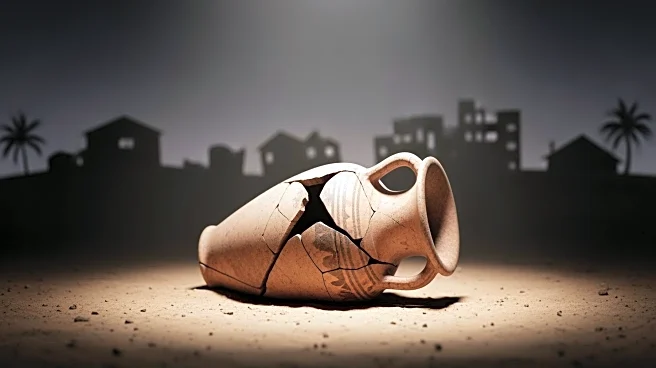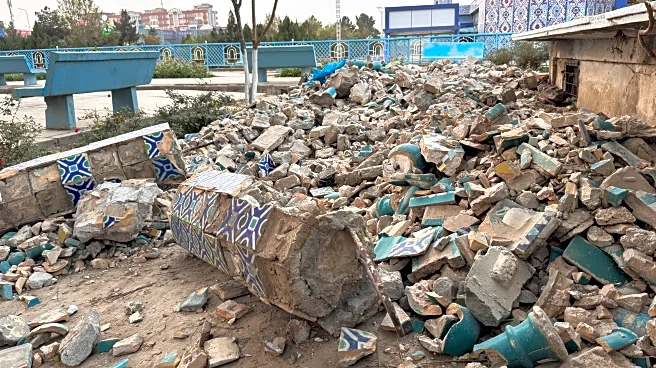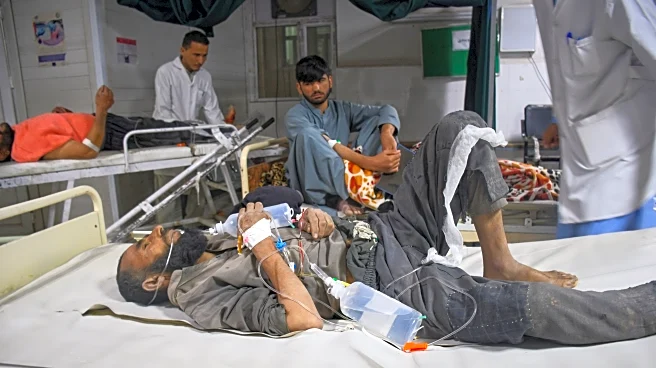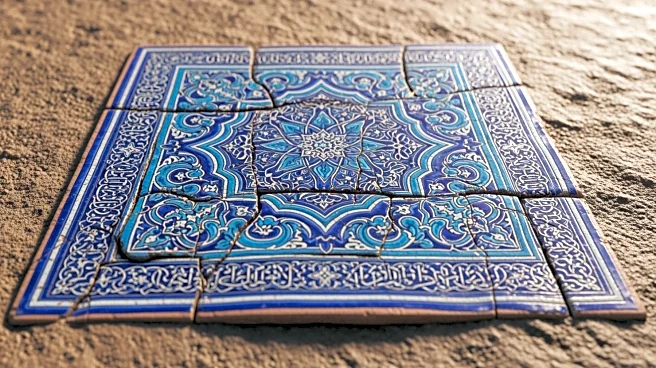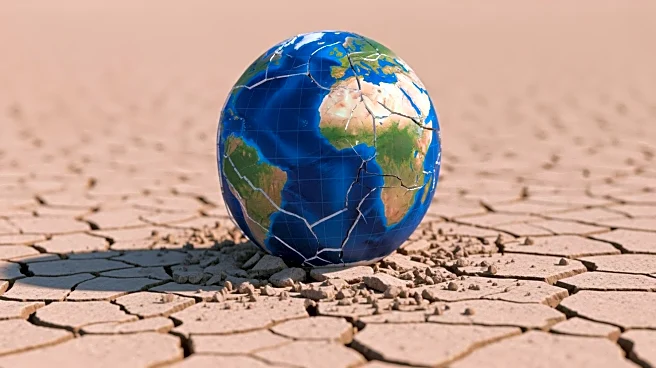What's Happening?
A powerful earthquake struck northern Afghanistan, resulting in significant loss of life and injury. The 6.3 magnitude quake occurred near Khulm in Samangan province, killing over 25 people and injuring
nearly 1,000. Survivors are facing harsh conditions, spending nights outdoors in cold weather, with rain forecasted to worsen their plight. The earthquake also caused damage to historical sites, including the Blue Mosque in Mazar-e-Sharif and the Bagh-e-Jahan Nama Palace in Khulm. The Blue Mosque, a revered religious landmark, suffered structural damage, while the palace experienced the collapse of a wall and tower, with cracks appearing throughout the structure.
Why It's Important?
The earthquake's impact extends beyond immediate human suffering, affecting Afghanistan's cultural heritage. The damage to historical sites like the Blue Mosque and Bagh-e-Jahan Nama Palace highlights the vulnerability of Afghanistan's cultural monuments to natural disasters. The destruction of these sites could have long-term implications for cultural preservation and tourism, which are vital for the country's economy. Additionally, the earthquake underscores the challenges faced by Afghanistan in disaster response, particularly in remote areas where infrastructure is weak and resources are scarce.
What's Next?
Efforts are underway to provide relief to affected communities, with authorities sending tents and basic necessities. Rescue operations continue, with health teams addressing damage to medical facilities, including the collapse of a laboratory at Samangan Provincial Hospital. The restoration of damaged historical sites is crucial, especially with winter approaching, which could exacerbate structural damage. The international community may need to assist Afghanistan in disaster recovery and cultural preservation efforts.
Beyond the Headlines
The earthquake highlights the broader issue of Afghanistan's vulnerability to natural disasters, compounded by its socio-economic challenges. The country's infrastructure, often poorly constructed, is ill-equipped to withstand such events, leading to significant human and cultural losses. This situation calls for increased investment in disaster preparedness and resilient infrastructure to mitigate future risks.


